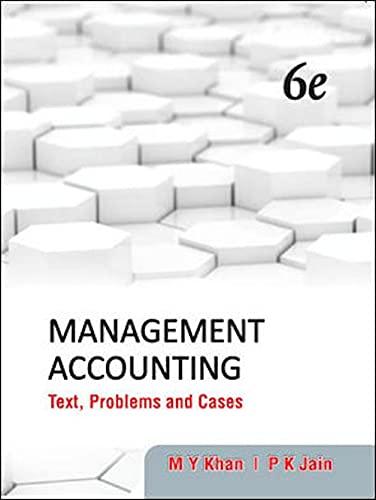Question
Other External Factors For the following factors, indicate those that were considered in obtaining an understanding of the entity and its environment. For each factor
- Other External Factors
For the following factors, indicate those that were considered in obtaining an understanding of the entity and its environment. For each factor considered below, provide a narrative of your understanding related to other external factors.
| Factor | Considered? (Yes, N/A) | Our Understanding | Procedures We Performed to Gain Our Understanding |
|
|
|
|
|
|
|
|
|
|
|
|
SECTION III: NATURE OF THE ENTITY
AU-C Section 315, Understanding the Entity and Its Environment and Assessing the Risks of Material Misstatement, indicates that the nature of an entity refers to the entitys operations, its ownership, governance, the types of investments that it is making and plans to make, the way that the entity is structured, and how it is financed. Among other procedures, complete AUD-815 Audit Program: Related-Party Transactions to assist in obtaining an understanding of certain higher-risk elements of the nature of the entity. Also consider completing steps 1 and 2 of AUD-816 Audit Program: Fair Value Measurements and Disclosures if you are aware of a significant fair value measurement or disclosure.
- Business Operations
For the following factors, indicate those that were considered in obtaining an understanding of the entity and its environment. For each factor considered below, provide a narrative of your understanding related to business operations.
| Factor | Considered? (Yes, N/A) | Our Understanding | Procedures We Performed to Gain Our Understanding |
|
|
|
|
|
|
|
|
|
|
|
|
|
|
|
|
|
|
|
|
|
|
|
|
|
|
|
|
|
|
|
|
|
|
|
|
|
|
|
|
|
|
|
|
|
|
|
|
|
|
|
|
|
|
|
|
|
|
|
|
|
|
|
|
|
|
|
|
|
|
|
|
|
|
|
|
|
|
|
|
|
|
|
|
|
|
|
|
|
|
|
|
Step by Step Solution
There are 3 Steps involved in it
Step: 1

Get Instant Access to Expert-Tailored Solutions
See step-by-step solutions with expert insights and AI powered tools for academic success
Step: 2

Step: 3

Ace Your Homework with AI
Get the answers you need in no time with our AI-driven, step-by-step assistance
Get Started


